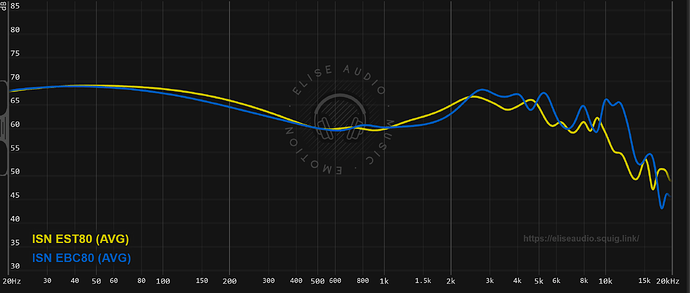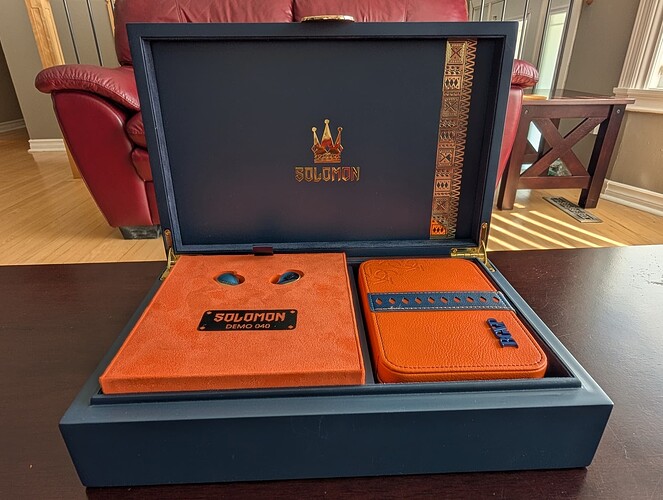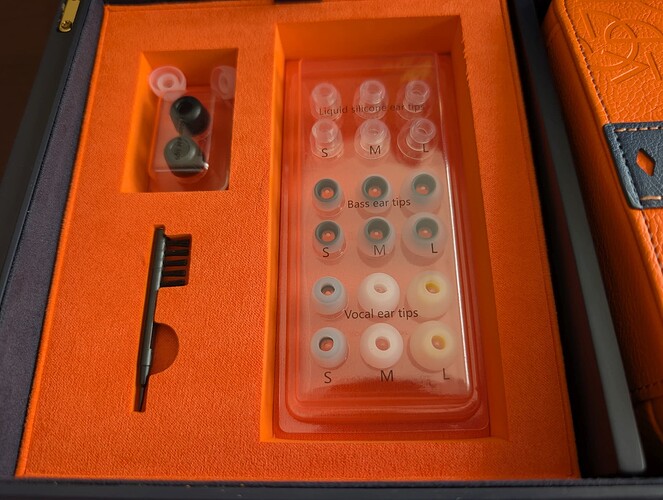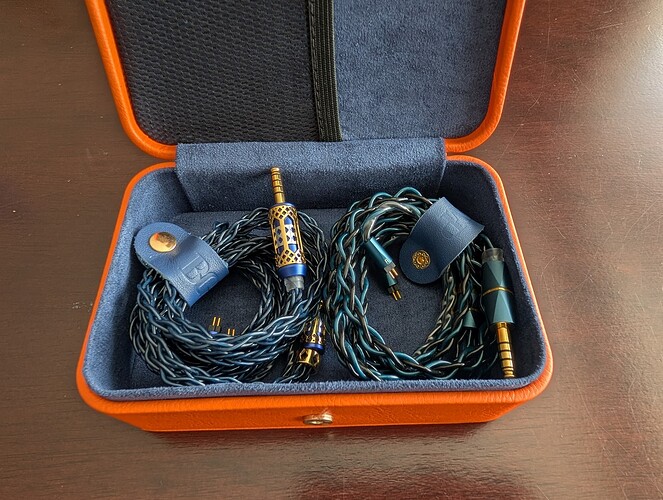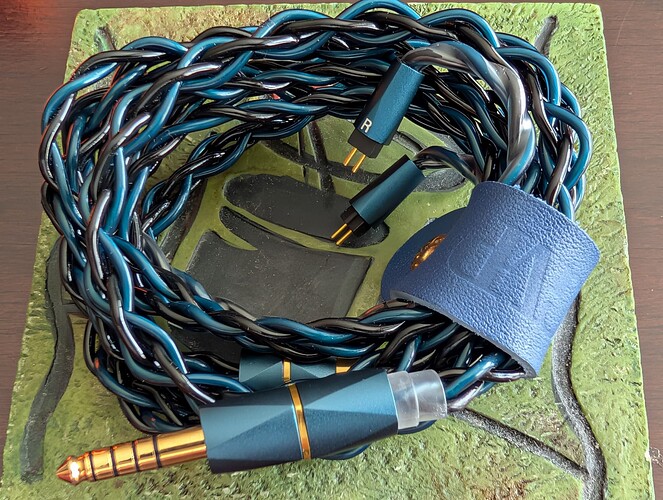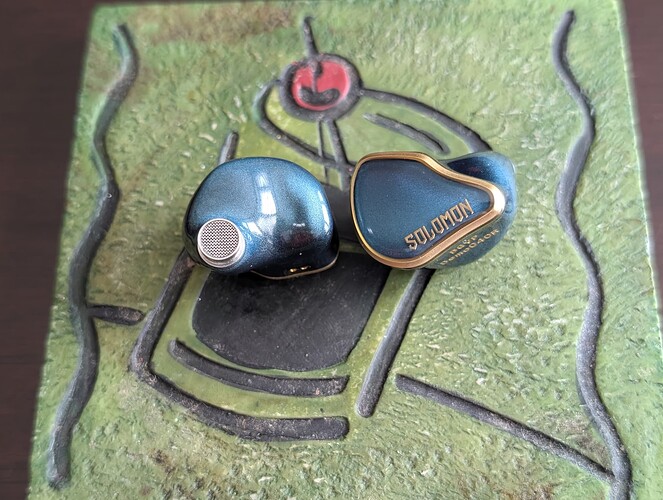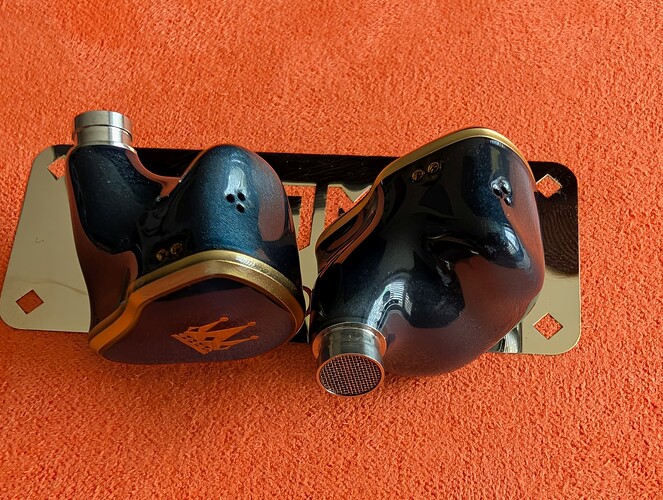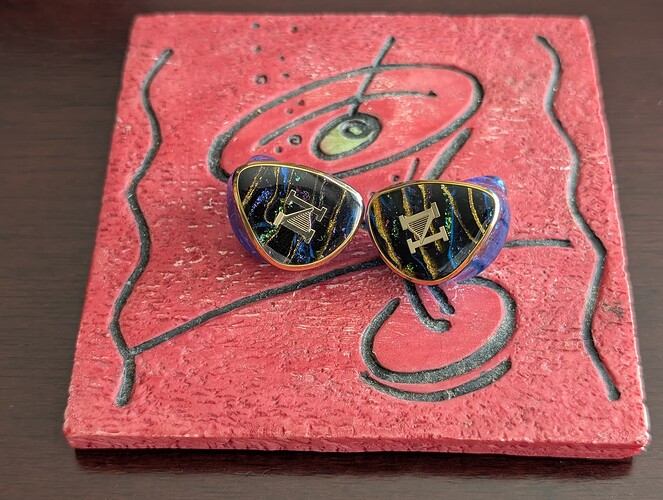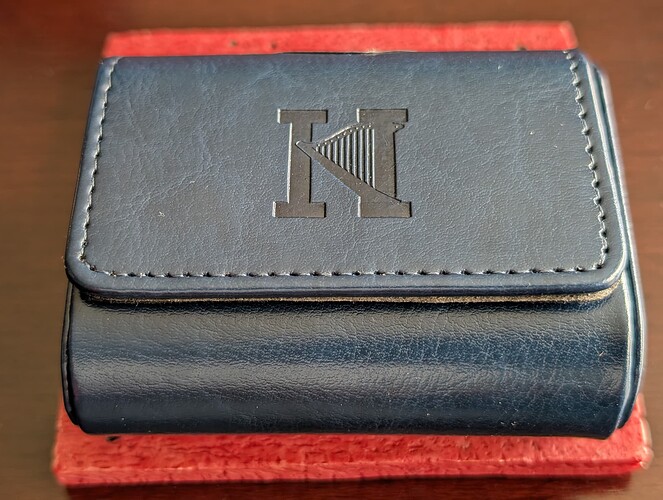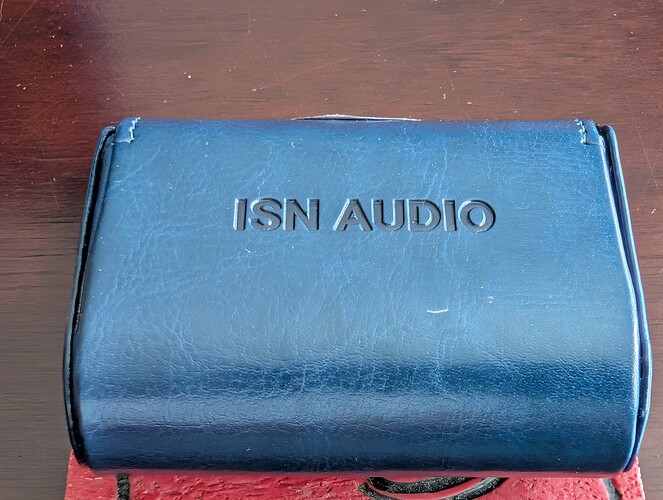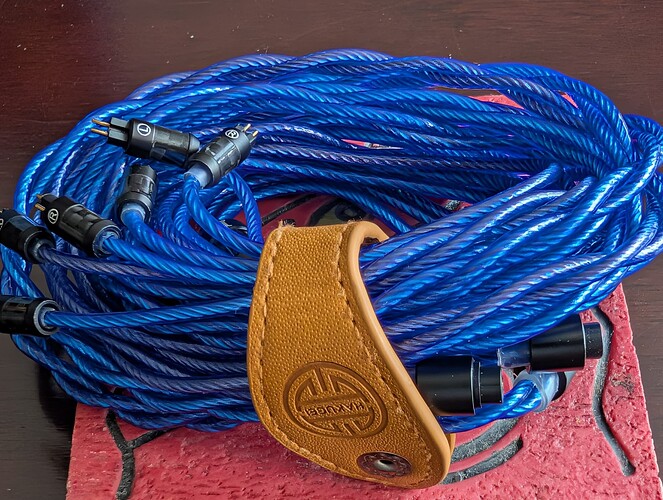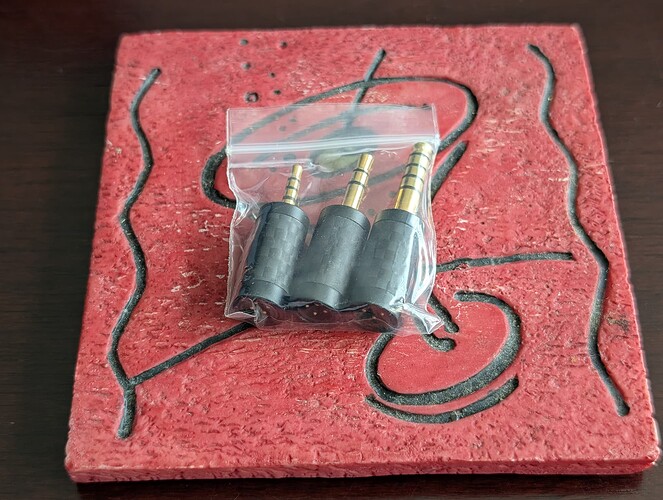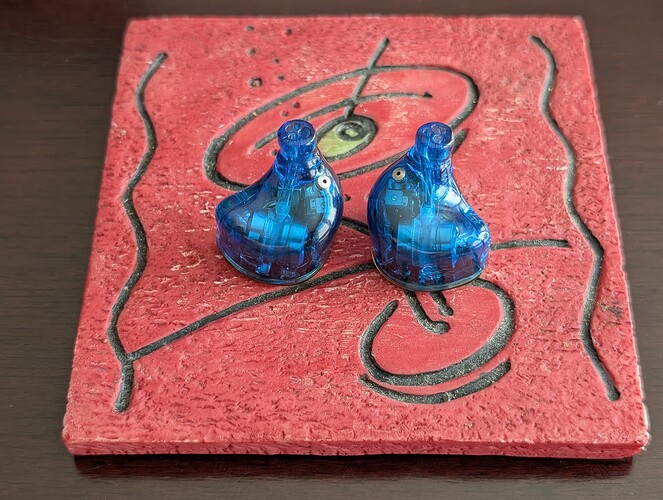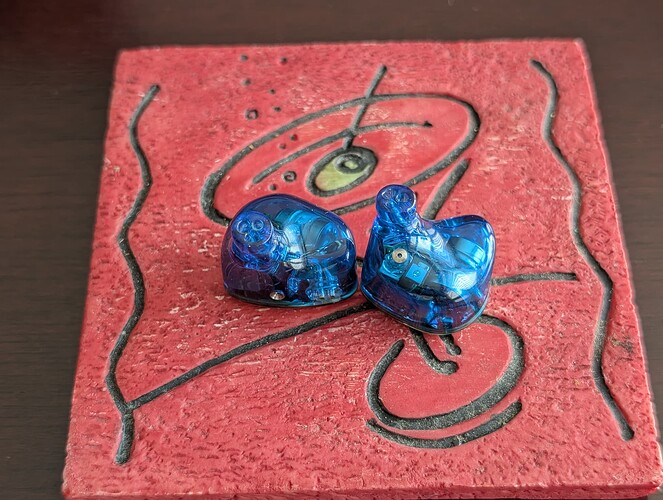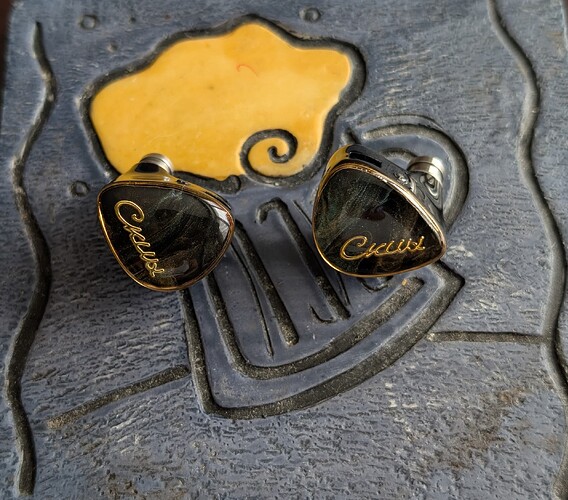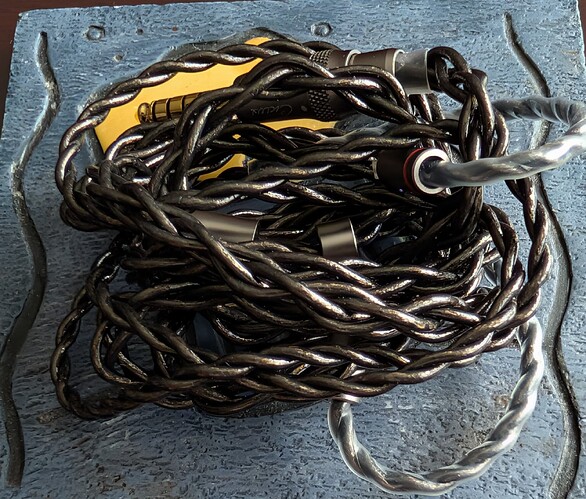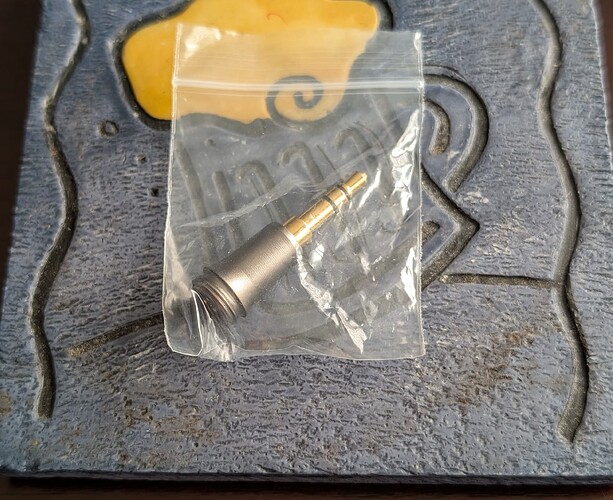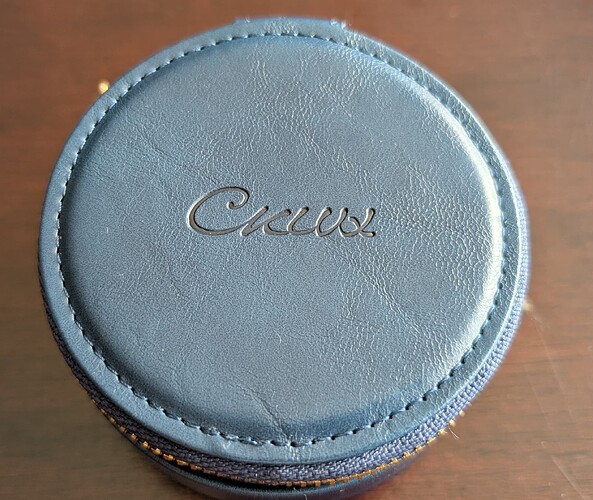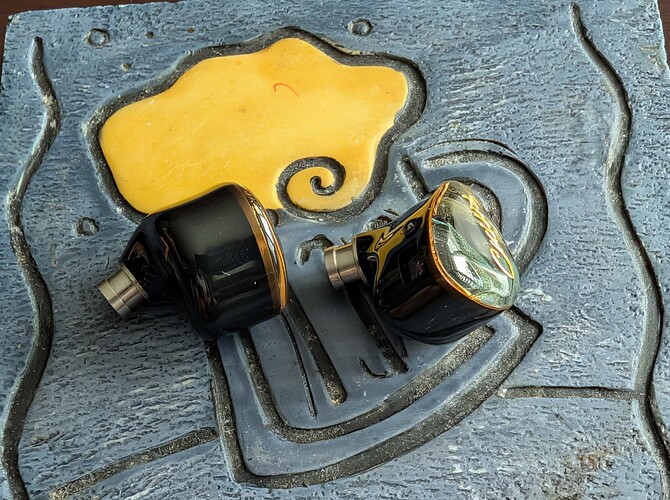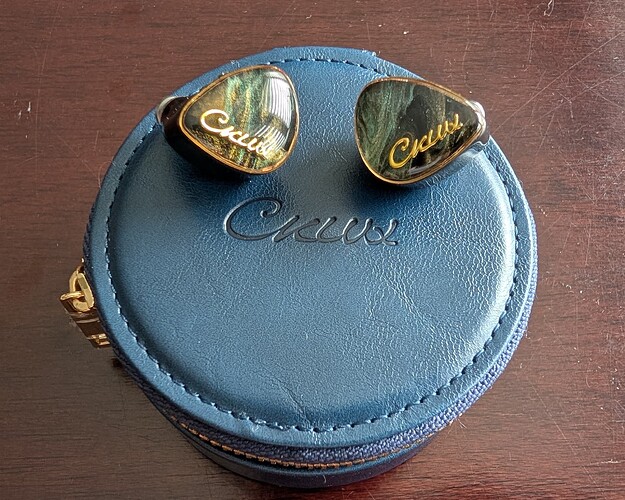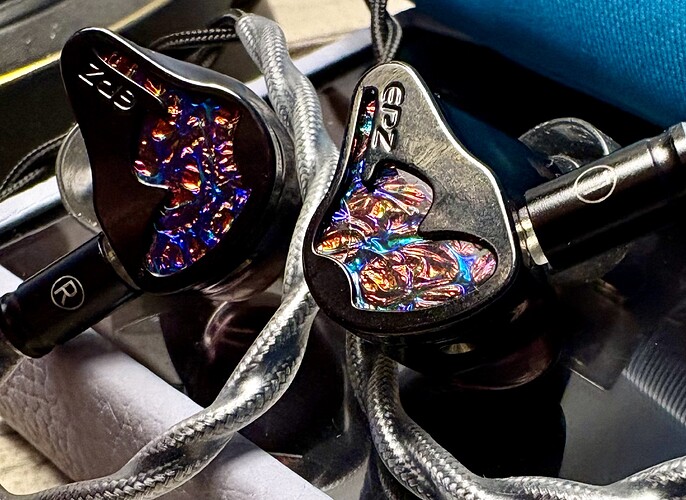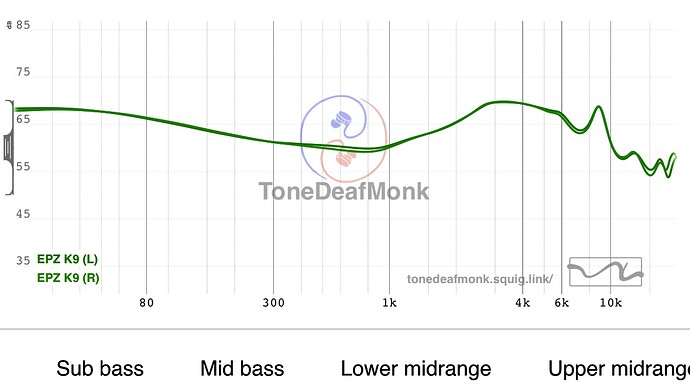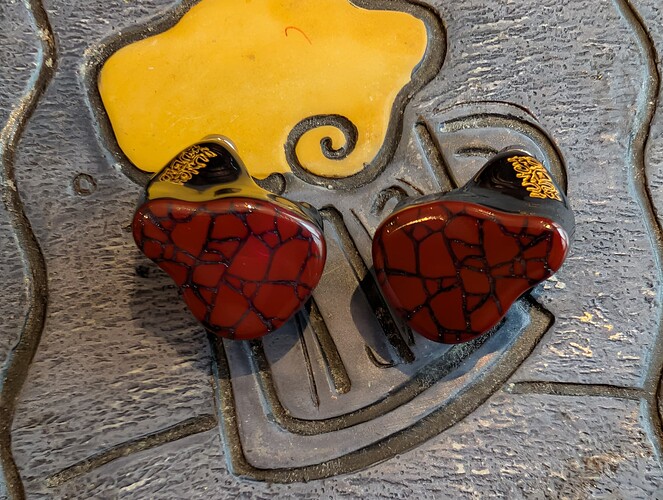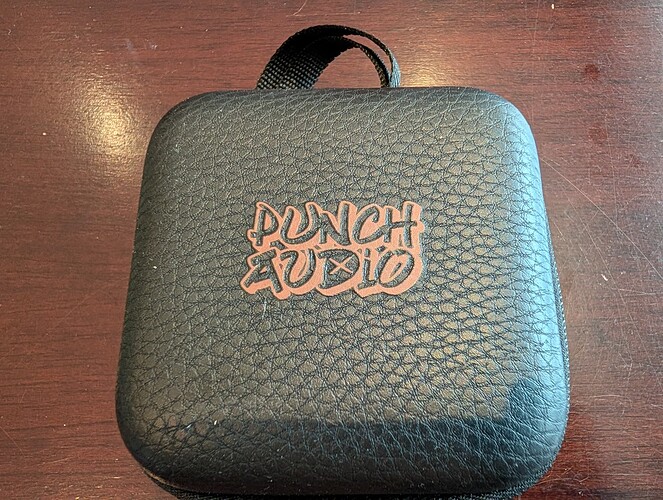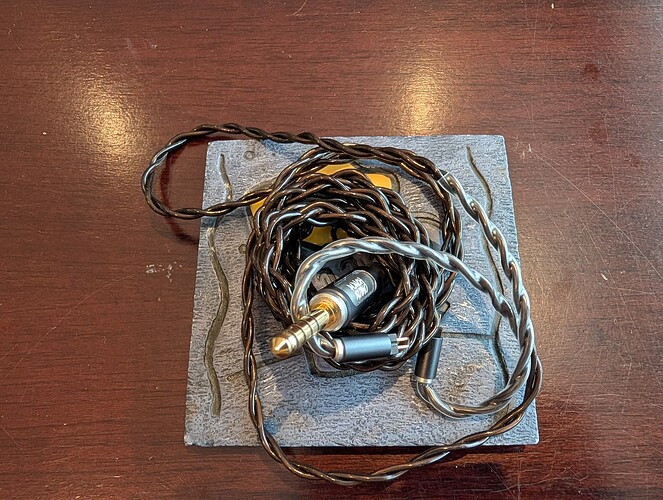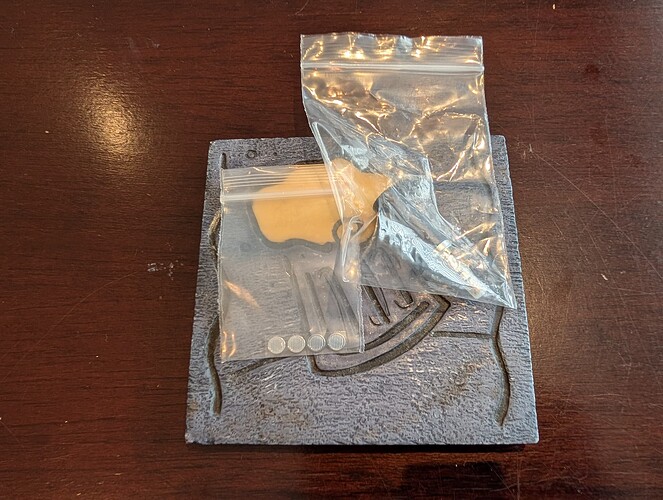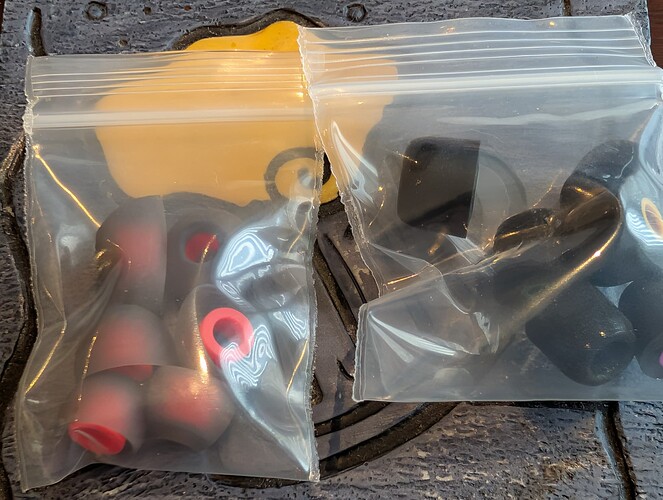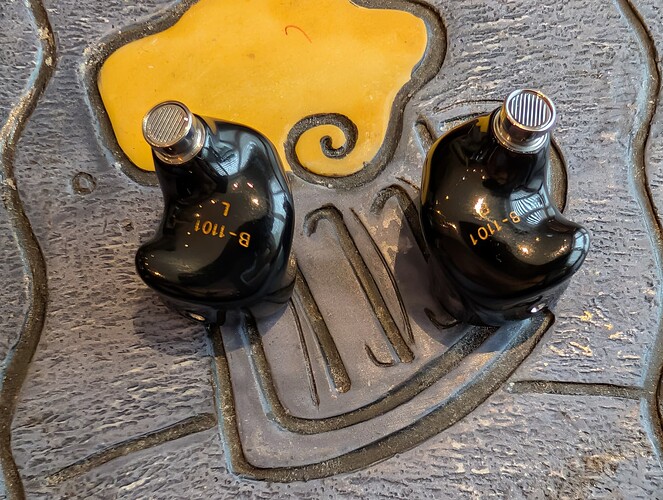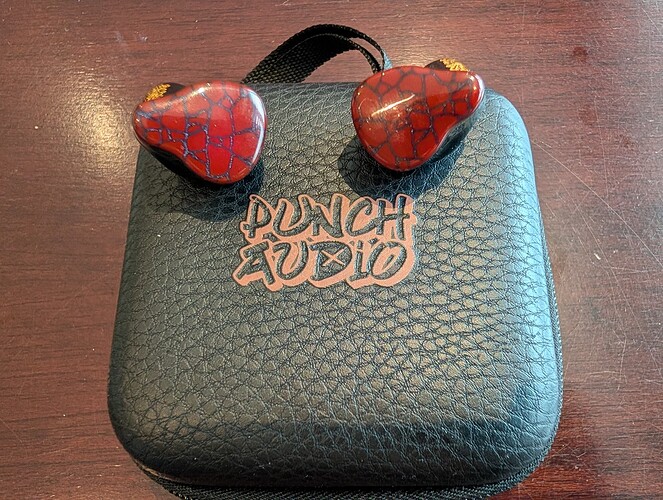That one definitely looks good
seems to match what bucky said: “more relaxed than ebc80 but still enough excitement”. good thing I went with the est80 instead, my ears can’t handle that much upper mids and treble region especially at higher volumes. @ToneDeafMonk
BGVP Solomon – A Technical Masterclass
Preamble:
The old saying “You Know Me, but You Don’t Know Me” is how I like to describe BGVP. Though they have a recognized place in the IEM market, they are not as intimately known as some oth-er players.
What I mean to say is, this is one company that seems to stand on firm technical knowhow and the solid implementation of that knowledge to produce positive tangible results. This is a different ap-proach from that taken by some of its competitors, who unfortunately allow the marketing department to dictate what a product is all about. Okay, enough ranting.
The Solomon is a TOTL calibre release. There is one more in their line, more expensive though, from a company that regularly releases some pretty ambitious products. Its nine-driver complement is impressive with dual horizontal symmetrically opposed 8mm PU+LCP dynamic drivers, 2x Sonion mid-treble balanced armatures. a single Sonion balanced armature for the midrange, 2x Sonion EST drivers and 2x Sonion bone conductor drivers.
Tuning wise the Solomon offers a balanced and mature sound signature with a touch of empha-sis in the upper registers. It has a bass that is of excellent quality but may not be for bassheads as it re-lays what’s in the track without embellishments. Driving the Solomon is fairly easy; however, it is high-ly recommended to drive it with a very capable front end, as it is a detail and resolution monster. I would also recommend a warmer source.
With the Solomon, BGVP have put on a masterclass in driver balancing and implementation. What they have achieved is a showcase of technical prowess in sound.
SPECS:
Drivers: Bass: 2x horizontally opposed 8mm LCP + PU composite diaphragm dynamic drivers.
Midrange: 1x Sonion Midrange BA.
Mid-Treble: 2x Sonion BA.
Treble; Sonion EST
2x Sonion Bone Conduction Drivers
Impedance: 7.3ohm.
Sensitivity: 110dB.
Cables: 4.4mm Balanced 4-strand Furukawa OCC Mixed Cable
4.4mm Balanced 8-core Furukawa SCC + Silver Coated Copper
Build & Fit:
The $1299 USD BGVP Solomon is a larger IEM, but its shape affords a comfortable fit. Tip selection will be important here for a secure fit and good seal, as well as the best sound.
The Solomon is an attractive IEM with its blue resin shell and gold-coloured accents and taste-fully done branding.
The retail presentation is next level wow. From the jewellery-quality wooden box to the obvi-ously high-quality accessories and appointments, everything here screams luxury. The unboxing experi-ence is akin to a new Rolex more so than an iem. BGVP has really gone over the top here, and it’s really up to the consumer as to how they react. After seeing the retail package, the first thing that crossed my mind was, “This better sound better than good.”
The included cables, yes there are two, deserve their own paragraph. Luxurious is the best way to describe it. Some manufacturers sell cables of this quality for higher than the cost of the Solomon itself.
The quality of every item was exemplary. From the finish of the IEMs to the additions, it seems they meticulously planned everything.
SOUND: Where the tires hit the road.
Bass:
The low end offers a balanced bass approach. This a more of a “what’s in the track’ type of tun-ing approach that makes the Solomon more versatile regarding music genres. With exemplary speed and control, the bass quality is excellent. The Solomon presented the textured bass notes on “Angel” by Massive Attack with great clarity. The Solomon’s potential bass power became apparent on “Intelligent Hoodlum” by Manix!. Again, the Solomon is not about making the ears bleed, but to faithfully play-back what is in a track. The double bass on “No Worries” sometimes gets buried with lesser detailed iems, but with the Solomon I could easily follow the notes.
BGVP have with the Solomon, crafted a high-quality bass delivery with ample control, texturing and speed, not to mention great tone. Bass also does not bleed into the midrange. While it may not satisfy the diehard bass maniac, quality almost always beats quantity in my book. Well done.
Midrange:
The BGVP Solomon is more resolving and analytical than warm and lush, yet it does not sound clinical. There is a sense that everything in a track is being served on a silver platter with nothing missing. As such, music with questionable recording quality could have its deficiencies made more obvious as the listener hears everything, both good and bad.
The Solomon’s midrange presents a crisp, open, and transparent canvas. Even on complex tracks such as “Beautiful Lie” by Vick Lavander, the Solomon makes it almost too easy to pick out each instrument in its own space. This space enlarges on less complex tracks, adding to the already open nature of the Solomon’s midrange.
Macro and micro-details are in abundance here with even fine details heard. Vocals, in particular female, are more forward in the mix than male, with all the nuances laid bare. This is not an IEM that sound can hide from.
Listening to “Love You to the Letter” by Anita Baker, I was more than pleased with the crisp vocal playback. “Tenderhearted Lover” by John Stoddart was the next song, and though it seemed a little less warm than I usually prefer, I could clearly hear the emotional delivery of this great artist.
The transients have admirable management, with excellent attack and a natural falloff. Timbre is very good, with instrument texturing being a standout.
Nitpicks are few, but in this world, nothing is perfect. I found that occasionally there was dry-ness and a lack of note weight and fullness of tone in the midrange. How detailed the Solomon is may have exasperated this even though I am a lover of details. This is also a preference and usually necessary for my complete musical immersion.
Still, despite my nitpicks, the Solomon continues to be a tour de force is sound. I am a lover of detail, and I could not ask for more. Lovers of complex orchestral passages will find much to love with the Solomon. In fact, this IEM lends itself well to every genre I threw at it. Midrange clarity is TOTL here.
Treble:
The BGVP Solomon has a treble that is extended with ample sparkle and air. Detail retrieval is exemplary, as are resolution and control. The treble seems to go on forever with no harshness noted at all.
Here we have a treble that excels at exposing the upper harmonics of instruments naturally with great resolution. Treble-sensitive folks may have something to say, but to these opinionated ears, it’s all bliss up top.
IMAGING & SOUNDSTAGE:
The BGVP Solomon throws up a wide and expansive soundstage that never sounds overdone. What is pleasing is the instrument separation and layering of all the elements. Imaging within that soundstage is pinpoint precise.
The analytical nature of the Solomon soundstage put on a show here, and it sounds more like a monitor than your typical consumer IEM. In fact, I would rank its soundstage and imaging alongside the likes of the 64 Audio U12t and U18t, which I described as “tools that just happen to sound musi-cal”. Not in absolute dimensions but more so in the analytical nature of its presentation. Technicalities are where the Solomon performs like a champion.
CONCLUSION:
With the Solomon, BGVP has solidified, at least in my mind, their standing as one of the most technically adept IEM manufacturers. This is not just referring to the tech, but also the sound they ex-tract from all that technology.
The Solomon is a statement in both form and execution, awarding the listener with an open landscape where the view is as far as the eyes can see. Is it for everyone? No, and I would be remiss if I thought so, as my ears and audio sensibilities are mine alone, audio being the subjective and fickle thing that it is. At times, I would have preferred a touch more note weight and fullness of tone, nevertheless the Solomon is a triumph.
BGVP has given us an IEM for those who value clarity, precision and musicality. Taken as a whole, both physically and auditory, the Solomon is actually a pleasant surprise at its asking price. There, I said it! I have listened to more than a few more expensive, some much more, IEMs that cannot match the innate qualities of this IEM. If musical precision is what you are after, the BGVP Soloman should be on your shortlist.
Great review Bennet!
I like this new Version very much has a great combination of neutral balance, power, technical chops and musicality!
CVJ brand Vivian a Vampy Bass Monster!
CLEAR AND ENERGETIC Thats how the Letshuoer Audio D02 comes across for me.
ISN EBC80 – Thick & Rich & Wonderful
Preamble:
ISN audio has been quietly putting out quality gear for some time. They have a reasonably extensive product line that features IEMs, earbuds and cables. The $630 USD EBC80, regarding price, stands near the top of their present line. This is not a new release, being out for close to a year now, but is still relevant, especially when considering its sonics.
The driver complement consists of an eight-driver hybrid setup with 2x Sonion ESTs for ultra-high frequencies, 1x Knowles balanced armature for high frequencies, 1x Sonion BA for the mids, 2x 8mm liquid silicone dynamic drivers for the low end and 2x Sonion BC drivers. ISN calls this setup “Quadbrid” and I guess they are right if taken at face value.
ISN, much like BGVP, is more than happy to reveal the manufacturers of its internal components, although they don’t go as much into detail describing the internal shell structure. Buyers can also select from three cable options when purchasing an EBC80, and the IEM will include one of them. The options are as follows.
-
Three kinds of ISN cables for you to choose from
-
ISN C2, H2, S2 cable options, you can choose the sound quality style of the cable paired with EBC80 according to your preference.
-
ISN C2
-
C2 is made of 2 shares 72 cores 6N+ OCC wires, the wire core is 0.08.
-
C2 focuses on excellent bass, warm details and natural and full mid-range, suitable for users whose main sound source is neutral and bright.
-
ISN H2
-
H2 is made of 2 shares, 72 cores, 6N+ OCC & silver-plated OCC hybrid wires, the wire core is 0.08.
-
H2 is a middle choice between C2 and S2, combining half of the characteristics of both.
-
ISN S2
-
S2 is made of 2 shares 72 cores 6N+ OCC silver-plated wires, the wire core is 0.08.
-
S2 can bring the cleanest sound quality, suitable for users who pay attention to details and use warmer sound sources.
That is interesting, to say the least, offering cables based on sound. I can say that the one I had in was of excellent quality.
Regarding tuning, the EBC80 offers a “fun” but engaging tuning with some sub-bass emphasis and good treble energy when required. I would describe it as a moderate U-shaped sound signature with great accuracy and musicality.
Listening to the hypertechnical BGVP Solomon just prior to the EBC80, the ISN proved to be a less analytical but just as engaging experience.
Fairly easy to drive, the EBC80 can reach good volume levels with most gear. This is not an excuse to go the low road. This IEM thrives on more capable and resolving sources. Tip selection is also important here as the EBC80 is a chunky IEM and needs a good seal and secure fit to sound its best.
Specs:
- Model: EBC80
- Driver: 2EST + 2BA + 2DD + 2BCD
- 2 Sonion Electrostatic Driver for Ultra-high frequency
- 1 Knowles Balanced Armature for High frequency
- 1 Sonion Balanced Armature for Middle frequency
- 2 8mm liquid silicone Dynamic Driver for Low frequency
- 2 Sonion Bone Conduction Driver for Full frequency
- Color: blue , black
- Impedance: 13 ohms
- Frequency range: 5 Hz-40 kHz
- Sensitivity: 106dB
- Connector: 2pin 0.78mm
- Plug: 3-in-1 detachable gold-plated plug (3.5mm audio, 2.5mm ) balanced ,4.4mm balanced)
- Cable length: 1.2M
Build & Fit:
-
Good looking iEM, with their blue shells and luxurious faceplates with prominent branding.
-
Build quality is very good.
-
Medium-sized but a little chunky with a comfortable fit because of its ergonomic shape.
-
The supplied accessories are also of good quality.
-
Cable choices have apparent good quality and haptics. Detachable cable 4.4mm & 3.5mm.
-
The retail package is basic.
-
The included carrying case is generic, but functional with nice branding.
SOUND:
Bass:
-
Bass goes deep with a pleasing authority.
-
Both sub-bass and mid-bass have a dense, rich punchiness to them.
-
Bass has ample rumble when called for.
-
Mid-bass has great speed and snap. Nicely articulate.
-
Bass texturing and detail are quite good.
-
The bass presence is wonderful and refined.
Midrange:
-
Lush with great clarity and transparency.
-
Detail retrieval is ample with both macro and micro-details clearly present.
-
Lower midrange warmth noted, in particular for male vocals.
-
Female vocals are clear and expressive.
-
Pleasing timbre and balance.
-
The pinna gain elevation, but it is well managed and does not exhibit harshness.
-
Note weight and density are pleasing.
-
Layering and separation are notable. Spacious midrange presentation.
-
Transients have a rapid attack with natural decay.
-
Easily relay the emotions of a vocalist’s performance.
-
Organic delivery with natural instruments and vocals.
Treble:
-
The treble extends well.
-
Treble has a substantial presence without splashiness.
-
Detail retrieval is notable.
-
Pleasing quantities of sparkle and air.
-
Treble follows the midrange with a lush and clean delivery.
-
Treble harmonics sound natural and unstrained.
The ISN EBC80 is a wonderful-sounding IEM. ISN has achieved an outstanding balance between being technical and musical. The EBC80 is one of the rare IEMs that I easily got lost in the music while listening to.
The bass is satisfying with its juicy yet organic delivery and serves as a sold foundation to the rest of the frequency range. The midrange has an open and organic sound with wonderful clarity and detail, sounding more musical than clinical. Here, the treble presentation is just the icing on the cake with its extension, openness and natural clarity.
The EBC80 is flexible and sound great regardless of music genre.
IMAGING & SOUNDSTAGE:
-
A larger-sized open soundstage.
-
Instrument placement is accurate.
-
The dimensions balance outstandingly, appearing more natural than exaggerated.
-
Space around the instruments, which is clearly defined.
-
Layering and instrument separation are well done. Congestion-free, even on busier tracks.
-
Vocals are distinct and easily placed among the instruments.
VERSUS:
BGVP Solomon
I had just finished reviewing the Solomon when the EBC80 finally graced my ears. In a nutshell, these are two outstanding IEMs, but they do approach sound reproduction somewhat differently. The Solomon is more technical than the EBC80, which is more organic. I can put it like this: the Solomon dissects the music with a surgeon’s precision, while the EBC80 offers a more worldly view of the music. Each still sounds musical in its own right.
Both are fantastic sets; that is assured, and I will label them both as keepers.
CONCLUSION:
ISN has brought to the table a fantastic IEM in the EBC80. An IEM that suits my listening preferences well. This is an IEM tailor-made for long and satisfying listening sessions.
Combine great build quality, attractive looks and, above all else, a rich and satisfying sound, and the ISN EBC80 is a clear winner.
Myer Audio CKLVX CK2V – Time To Chillax
Preamble:
Meyer Audio is an interesting company with two separate yet similar product lines, CKLVX and Sliivo. I say similar since when inspecting what each line offers; it becomes apparent that there isn’t really a certain singular thing that separates them.
That being said, having recently listened to the SLA3 and S224, both from the Sliivo line, I approached the CK2V with high expectations. The CK2V largely met those lofty expectations, thankfully.
The $160 USD CK2V uses a hybrid seven-driver configuration with a single 10mm dynamic driver, a pair of Knowles balanced armatures joined by another pair of custom BA drivers. Additionally, dual micro-planar drivers and a four-way crossover complete this configuration.
Regarding tuning, the CK2V offers a balanced sound signature without emphasis on any area of the frequency range. The CK2V has a nice smooth sound with some added warmth in the lower midrange. While overall not the most refined set in its price range, it nevertheless offers a wonderful listening experience.
The CK2V is easy to drive and plays nice with most front ends. Trip selection was easy, and I went with a short-stemmed, wide-bored variety for my listening.
Specs:
10mm Custom Dynamic Driver+Four Balanced Armature Drivers+ Custom Composite Dual Micro Planar Drivers.
Two Knowles+Two Custom Balanced Armature Drivers.
High-Precision 3D Printed Acoustic Chamber.
Precisely Designed Four-Way Frequency Crossover.
Impedance: 40Ω.
Sensitivity: 108dB.
Termination Plugs: Gold-Plated 3.5mm+4.4mm.
Connectors: 0.78mm 2-pin connectors.
Build & Fit:
- Attractive IEM. Medium-sized shells with a pattern adorned top plate with tasteful branding.
- Build quality is very good.
- Medium-sized with an easy fit suited for long listening sessions discomfort-free.
- The supplied accessories are also of good quality.
- Good quality detachable cable, 4.4mm & 3.5mm, with a solid screw-in retention mechanism.
- The retail package is basic.
- The included carrying case is generic, but functional with nice branding.
SOUND:
Bass:
- Bass has good authority when called for. Rich playback of low notes.
- Both sub-bass and mid-bass have a dense, rich punchiness to them.
- Bass has ample rumble when called for.
- Mid-bass has great speed and snap. Nicely articulate.
- Bass texturing and detail are pleasing.
- The bass presence is wonderful and decently refined.
Midrange:
- Lush, balanced presentation.
- Detail retrieval is good, macro over micro.
- Lower midrange warmth noted, in particular for male vocals.
- Female vocals are clear and expressive without added presence.
- Pleasing timbre and balance.
- The pinna moderately gains elevation, but it is well managed and does not exhibit harshness.
- Note weight and density are pleasing.
- Layering and separation are good but not class-leading.
- Transients have a rapid attack with natural decay.
- Upper midrange control restrains any forwardness. It might be too controlled for some listeners.
- Organic delivery with natural instruments and vocals.
Treble:
-
The treble extends well.
-
Upper treble detail is notable.
-
Detail retrieval is good.
-
Pleasing quantities of sparkle and air.
-
Treble follows the midrange with a lush and clean delivery.
-
Treble presentation complements the rest of the frequency range.
The CKLVX CK2V has a sound tailor-made for long listening sessions regardless of genre. The balanced mids, deep, capable bass and lush treble more often than not added to the organic delivery.
Some may argue that the relatively tame upper midrange can reduce the liveness of the sound. I would argue otherwise, as this can usually become a distraction. This is not a lifeless-sounding IEM by any measure. I’m sitting here writing this while listening to Anita Baker massage my ears, and it’s all gravy.
Although the layering and separation are good, some competitors such as the Sivga Que UTG and even the Sliivo SLA3 can do better at this metric, particularly on busier tracks. Still, the CK2V is a good listen and a wonderful IEM to just sit back and chill.
IMAGING & SOUNDSTAGE:
- A larger-sized open soundstage.
- Instrument placement is accurate.
- Well-balanced dimensions.
- Good instrument spacing.
- Layering and instrument separation are well done.
- Vocals are distinct from the music. Easy to follow.
CONCLUSION:
Meyer-Audio has released some quality products in the last year. The CKLVX CK2V follows faithfully in that path, offering a balanced sound that I am sure will please many listeners.
That’s exciting! The U12T is definitely one of those sets people look forward to trying—hope it lands soon and you get plenty of time with it on the tour.
That was from 2 years ago. U12T was here and gone.
But, you are right. U12T is a very good IEM and all three Canuck Audioholics enjoyed it. ![]()
EPZ K9
9 Driver Hybrid IEM. $257.82 usd.
1qty 8mm PEK+PU composite diaphragm Dynamic Driver - Bass.
4qty Custom 32557 BA - Mids.
4qty Custom 31735 BA - Highs.
3 way hybrid crossover system electronic and acoustic tubes.
Frequency Response Range: 20Hz-20kHz
Sensitivity: 108dB (±3dB)
![]() Preamble:
Preamble:
Sincere thanks and appreciation go out to EPZ for providing the Canuck Audioholics with the EPZ K9 review sample. ![]()
![]()
Tone Deaf Monk
King Nubian
Krusty’olBastid
I received only the ear pieces, cable, and carry case so I’m not able to fully address the retail packaging/unboxing experience.
**NOTE: I’m currently travelling and carrying light on gear.
I only have the FiiO JM21 as a warmer source, and the brighter more resolving Astell & Kern HC4 dongle attached to my iPhone as sources.
![]() Pros and Cons:
Pros and Cons:
![]() Vented 3D printed resin shells feature a semi custom fit design, and a wing to assist with nozzle angle. Nozzles are resin, straight, with no “lip” or “flange” to help secure the ear tips.
Vented 3D printed resin shells feature a semi custom fit design, and a wing to assist with nozzle angle. Nozzles are resin, straight, with no “lip” or “flange” to help secure the ear tips.
I have not experienced any problems with the ear tips staying securely in place.
Faceplates are metal with a “butterfly wing” shaped cutout, backed by a colourful, hand annealed, foil insert.
Shells are medium large to large in size. They fit ok in my larger sized ears, insertion depth is intended to be fairly deep.
I have challenges with deeper insertions and such was the case with the K9.
I was able to acquire a secure anchor and seal using Sedna Xelastec tips, but more to the outer portion of my ear canal, so the ear pieces were not fully seated in ear, and, sticking out of my ears to some degree.
![]() This is a frivolous nit pick, but, there is a very noticeable seam at the junction of shell and faceplate. This in no way affects the quality or sonics of the IEM, however I have become so accustomed to the virtually seamless design of 3D printed shells, I find this a notable distraction in the overall aesthetic of the ear pieces.
This is a frivolous nit pick, but, there is a very noticeable seam at the junction of shell and faceplate. This in no way affects the quality or sonics of the IEM, however I have become so accustomed to the virtually seamless design of 3D printed shells, I find this a notable distraction in the overall aesthetic of the ear pieces.
![]() The stock, fabric wrapped, 6N mono crystalline pure copper modular cable is a very nice offering.
The stock, fabric wrapped, 6N mono crystalline pure copper modular cable is a very nice offering.
90 degree swappable 3.5 and 4.4mm terminations, metal encased hardware and functional chin toggle.
![]() There is some micro-phonics from the fabric wrap. More so above the Y splitter. But not as prominent as other fabric wrapped cables I’ve experienced.
There is some micro-phonics from the fabric wrap. More so above the Y splitter. But not as prominent as other fabric wrapped cables I’ve experienced.
I mostly listen to music while relaxed and more or less stationary, so not a notable concern for me. Those who listen while active may find a cable swap desirable.
![]() Technically speaking, the IEM is not difficult to drive, listenable volumes are easily attainable on basic source devices.
Technically speaking, the IEM is not difficult to drive, listenable volumes are easily attainable on basic source devices.
![]() The Dynamic driver needs extra power to drive it adequately.
The Dynamic driver needs extra power to drive it adequately.
I found increasing volume enough to fully engage the DD energized the mids enough that I started to fatigue a bit after moderate length listening sessions.
** Note that I have some mids sensitivity, so this may not represent the listening experience for others.
![]() Bass is good if you apply adequate power.
Bass is good if you apply adequate power.
Sub bass pulls low with good rumble.
Mid bass has good impact, and there is decent definition between sub and mid bass.
I do find the bass a bit loose and boomy.
![]()
![]() Mid range has good clarity and detail, but BA shimmer is evident throwing the timbre off and giving the upper mids and vocals a dry tonality.
Mid range has good clarity and detail, but BA shimmer is evident throwing the timbre off and giving the upper mids and vocals a dry tonality.
![]() Highs are carried mostly by the upper mid range, with a nice splash of air and sparkle thrown in.
Highs are carried mostly by the upper mid range, with a nice splash of air and sparkle thrown in.
Unfortunately BA shimmer is also evident in the high end.
![]() Staging is decent with good left to right width, and good top to bottom height. Front to rear depth is below average.
Staging is decent with good left to right width, and good top to bottom height. Front to rear depth is below average.
Imaging and separation are good.
![]() Summary:
Summary:
Critical listening was done on the FiiO Jade Audio JM21 DAP, mid gain, 4.4mm out, stock cable, Sedna Xelastec wide bore ear tips.
Unfortunately the EPZ K9 just doesn’t fit well with my listening preferences.
Mostly because of needing to increase volume to adequately drive the Dynamic driver, which often meant the volume was louder than my preferred listening level, leading to early listening fatigue.
While the upper mids were not harsh or sibilant, the extra energy experienced at the volume levels I found necessary to optimize bass performance, did not work well for me. Early fatigue and BA shimmer resulted in detracting from an enjoyable listening experience.
Priced in the mid $200 usd range, the EPZ K9 is one you will have to experience for yourself to determine value.
For me, it is a swing and miss.
![]() My music sources:
My music sources:
Qobuz, and, FLAC and DSD files stored on the SD cards of my daps.
My music genre are primarily Rock, Blues, Jazz, Symphonic, Country, Rap, R&B, Pop, Electronic.
Enjoy your music. ![]()
Punch Audio Martlio – Basshead Refined, Once Again
Preamble:
Punch Audio is new company in the IEM space. With the introduction of the Martilo, the company is looking to establish itself as a viable player in the iEM market. I would say that have done just that and more, despite what their marketing department says.
The marketing team promotes the Martilo as a “Pure Bass mania” IEM, which I believe is a serious disservice to the other defining qualities of this IEM. The Martilo is so much more; in fact, it reminds me of one of my favourite IEMs, the Oriolus Szalayi in many respects, at least for its sonic footprint. It is so much more than just Basshead.
Driver compliment of the Martilo comprises two 8mm dynamic drivers, dual Knowles RDE balanced armature drivers for the midrange and a single planar driver for the treble frequencies. The shell cap design reminds me of Spiderman whenever I glance at it. But that’s not important lol. What is important is that the build quality is top-notch. Makes me wonder if Punch Audio is just another brand from an established player. I digress.
The Martillo has on offer a neutral tuning with prodigious sub-bass when called for. There is a sub-bass over mid-bass bias noted. The sound isn’t basshead for the sake of ear shaking. The rest of the frequency range does not take a back seat, standing out as refined and complementary to that powerful low end.
The Martillo is relatively easy to drive, but does scale with a better source. You will mostly hear this in the bass definition and the upper midrange/treble, which become more forward and less refined without quality adequate power. A neutral source and wide-bored tips are also what I recommend.
Specs:
Drivers: 1 planar driver + 2 balanced armatures (Knowles RDE) + 2×8 mm dynamic
Sensitivity: 100 dB @ 1 kHz (±1 dB)
Frequency Response: 10 Hz–22 kHz
Impedance: 9 Ω @ 1 kHz (±1.5 Ω)
Cable: 2-Pin 0.78 mm to 3.5 mm
Cable Length: 1.25 m ± 5 cm
Inside the Box:
• Punch Audio Martilo x1 Pair
• Earphone Cable x1
• 3.5 mm Plug Adapter x1
• 4.4 mm Plug Adapter x1
• Silicone Ear Tips x3 Pairs
• Foam Ear Tips x3 Pairs
• Nozzle Filters x2 Sets
• Earphone Case x1
Build & Fit:
- Attractive IEM. Larger-sized shells with a pattern adorned the top plate with tasteful branding.
- Build quality is excellent.
- Easy fit despite the size, suited for long listening sessions with wonderful comfort.
- The supplied accessories are also of good quality.
- Good quality detachable cable, 4.4mm & 3.5mm, with friction retention mechanism.
- The retail packaging is basic but tastefully done.
- The included carrying case is generic, but functional, with good size and nice branding.
SOUND:
Bass:
- Standout bass authority with superb control and clarity.
- Both sub-bass and mid-bass have a warm, dense, rich punchiness.
- Bass has a powerful rumble.
- Mid-bass has great speed and snap. Nicely articulate.
- Bass texturing and detail are excellent. Nicely refined.
- The bass goes deep, like to the depths deep.
- Bass is natural and organic. Nicely resolving.
Midrange:
- Balanced midrange presentation with good openness.
- Detail retrieval is good, macro over micro. More detail in upper vs lower midrange.
- Lower midrange has warmth. Male vocals have a pleasing tone with good emotional delivery.
- Female vocals are clear and expressive with a touch of added presence.
- Pleasing timbre and balance.
- The IEM controls the pinna moderately, and there is little to no harshness.
- Note-weight and density are very good.
- Layering and separation are good but not class-leading.
- Transients have a rapid attack with natural decay.
- Overall midrange clarity is pleasing.
- Organic delivery with natural instruments and vocals.
Treble:
-
The treble extends well.
-
Upper treble detail is notable.
-
Detail retrieval is good.
-
Pleasing quantities of sparkle and air.
-
Treble follows the midrange with a lush and clean delivery.
-
Treble presentation complements the rest of the frequency range, adding airiness to counter the strong bass and warm lower mids.
The Punch Audio Martilo is so much more than a pure basshead IEM. Thankfully, the tuners have not forgotten the midrange or treble, affording the sonic footprint greater balance.
The bass presence is powerful, yet tempered by the mids and treble to a great extent. This goes a long way in making the Martilo a good choice for listening to a wide variety of music genres. I listened to Jazz, House Music, Reggae, R&B and pop on the Martillo and it never faltered. In fact, when listening to the Jazz track “No Worries” by the Robert Glasper Trio, I was more than pleased with the fullness of sound heard on the piano and quality of the double bass playback, never at the expense of the intricate cymbal work.
The bass is also interesting as it is ever-present but does somehow get out of the way when a track has little significant energy there. Again, this makes the Martilo a versatile IEM regardless of what the marketing would have some believe.
VS: -Oriolus Szalayi-
Each has a similar sound signature, what I like to call “Refined Basshead”. The Bass on either is very comparable in terms of power, detail and delivery. It is in the midrange and treble where the difference is more clearly observed.
The Szalayi has a slightly more prominent mid/treble region with noticeably superior resolution and detail retrieval. The Oriolus Szalayi, regarding the midrange and treble, is one of the best I have heard, subjective of course, even given its basshead roots. It just tops the Martilo for a natural and organic delivery of sound.
At double the price, the Oriolus Szalayi is a more expensive but incredible performer. This takes nothing away from the Martilo, which in its price range sees almost no competition with this type of tuning combined with its sound quality.
IMAGING & SOUNDSTAGE:
- A moderate-size open soundstage.
- Instrument placement is accurate.
- Width is comparatively greater than height of depth.
- Good instrument spacing.
- Layering and instrument separation are well done.
- Vocals are distinct from the music. Easy to follow.
CONCLUSION:
The Punch Audio Martilo is an ambitious first release from the brand. Its merits do not just sit on its basshead label, but reach far beyond that. It offers a balanced midrange and treble tuning with a definite sub-bass upward tilt. The refinement in the mids and treble goes a long way in making the Martilo a very capable and versatile performer.
I, for one, never thought my listening preference leaned towards the Basshead side of things, but my experience with the Oriolus Szalayi redefined my listening preferences. The Martilo continues that transformation with yet another standout “Basshead” IEM, which doesn’t shy away from also being refined in the rest of the frequency range. My audio sensibilities tell me that The Punch Audio Martilo isn’t just a Basshead IEM, but a capable and great-sounding IEM in of itself. It’s a good one folks.
